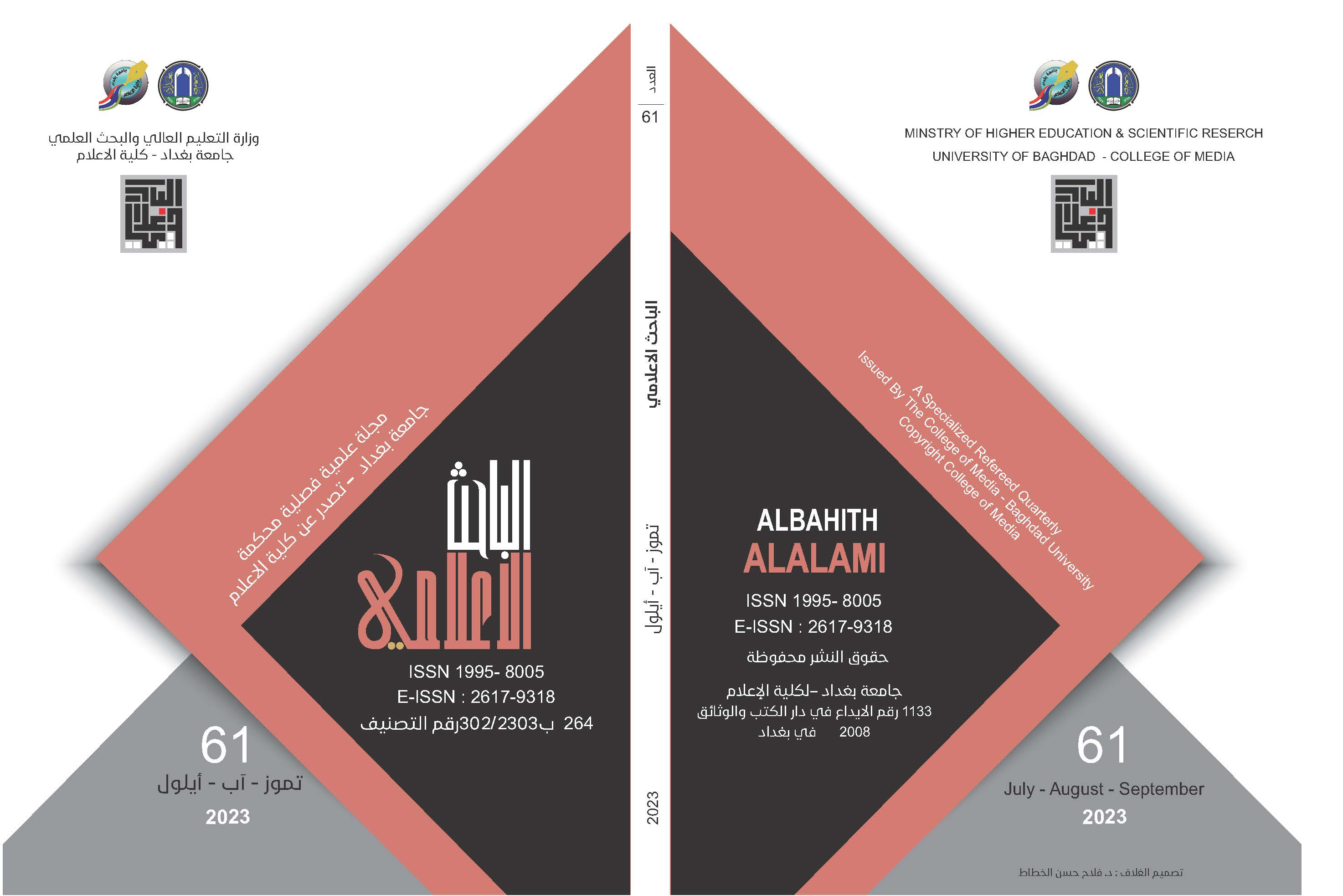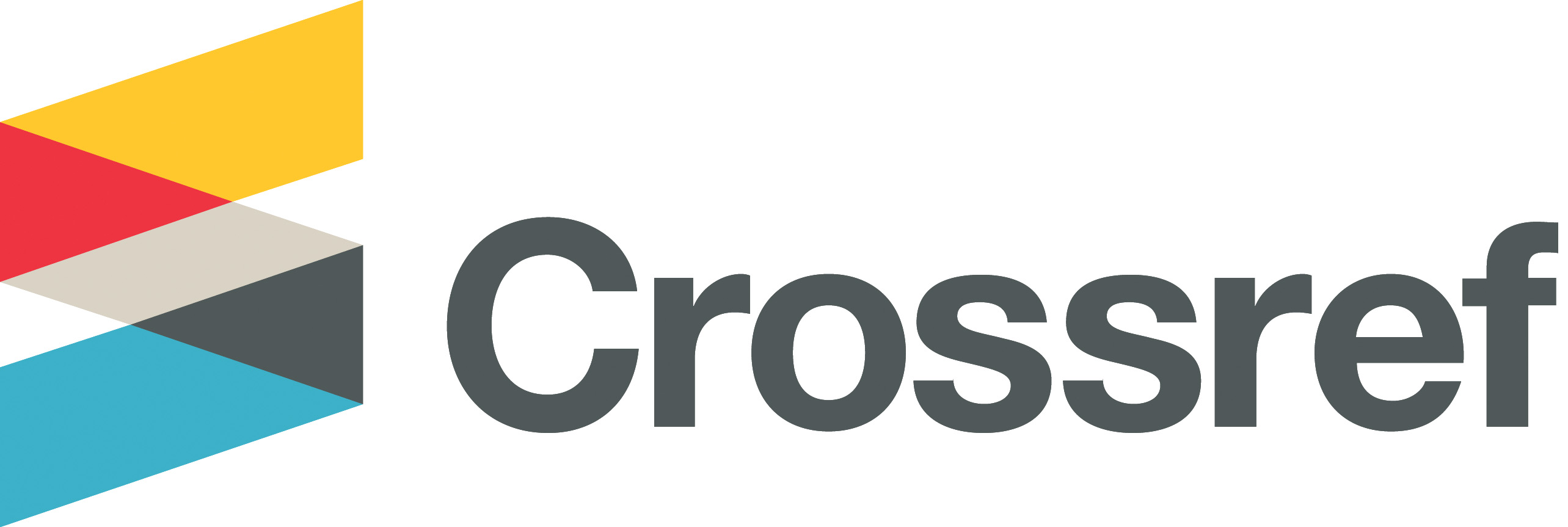أداء المرأة العربية على موقع إنستغرام
DOI:
https://doi.org/10.33282/abaa.v15i61.1092الكلمات المفتاحية:
إنستغرام، المرأة العربية، الإمارات العربية المتحدة، الهوية الرقميةالملخص
الهدف: تبحث هذه الدراسة في استخدامات موقع إنستغرام بين الشابات العربيات في الإمارات العربية المتحدة ، مع التركيز على كيفية قيامهن بالتعبير عن هوياتهن الرقمية وما إذا كان هناك تعارض بين هوياتهن الرقمية و هوياتهن الأصلية.
المنهج: تستند الدراسة إلى 11 مقابلة مع شابات في الإمارات تتراوح أعمارهن بين 20 و 30 عامًا، فضلًا عن متابعة أنشطة المشاركات على الإنستغرام.
النتائج: تخلص الدراسة الى أن منصات التواصل الرقمية مثل إنستغرام قد تلعب دورًا في "تمكين" المرأة العربية ، لكن المستخدمات لهذه المواقع يتفاعلن مع المحتوى وفقًا لتوقعات جمهورهن. وهذا يؤكد دور الثقافة الجماعية في السياق الثقافي العربي حيث قد تشعر المرأة بمزيد من التدقيق على هذه المواقع مقارنة بالرجل.
التنزيلات
المراجع
Alexander, K., & Mazzucco, L. J. M. (2021). Beyond the Bedouin path: The evolution of Emirati national identity. Middle East Institute. https://www.mei.edu/publications/beyond-bedouin-path-evolution-emirati-national-identity.
Al-Kandari, A. A., Al-Sumait, F. Y., & Al-Hunaiyyan, A. (2017). Looking perfect: Instagram use in a Kuwaiti cultural context. Journal of International and Intercultural Communication, 10(4), 273–290. https://doi.org/10.1080/17513057.2017.1281430
AlMaazmi, A. Y. (2021). The Apocalyptic Hijab: Emirati Mediations of Pious Fashion and Conflict Talk. Journal of Women of the Middle East and the Islamic World, 19, 5–27.
Al-Malki, A., Kaufer, D., & Ishizaki, S. (2012). Arab Women in Arab News: Old Stereotypes and New Media. Bloomsbury.
AlMutawa, R. (2019). The mall isn’t authentic!": Dubai’s Creative Class and The Construction of Social Distinction. Urban Anthropology, 48(1/2), 183–223.
AlMutawa, R. (2020). I Want to be a Leader, But Men Are Better Than Women in Leadership Positions” State Feminism and Legitimizing Myths in the United Arab Emirates. Journal of Women of the Middle East and the Islamic World, 18, 31–50.
Alsaggaf, R. (2015). Identity Construction and Social Capital: A Qualitative Study of the Use of Facebook by Saudi Women [Unpublished Ph.D. dissertation,]. Leicester University.
Alsaggaf, R. (2019). Saudi women’s identities on Facebook: Context collapse, judgement, and the imagined audience. The Electronic Journal of Information Systems in Developing Countries, 85(2), 12070. https://doi.org/10.1002/isd2.12070
Alzara, N., & Moussa, M. B. (2020). Online selfie behaviour and self-representation among Emirati youth. American Communication Journal, 22(2). http://www.ac-journal.org/wp-content/uploads/2020/11/Online-Selfie-Behavior-and-Self-Representation-Among-Emirati-Youth.pdf
Atkinson, R, & Flint,J. (2001). Accessing Hidden and Hard-to-Reach Populations: Snowball Research Strategies. Social Research Update, 33(1), 1–4.
Banet-Weiser, S. (2011). Branding the Post-Feminist Self: Girls’ Video Production and YouTube. In M. C. Kearney (Ed.), Mediated Girlhoods: New Explorations of Girls’ Media Culture. Peter Lang.
Banet-Weiser, S. (2018). Empowered: Popular feminism and popular misogyny. Duke University Press.
Barta, K., & Andalibi, N. (2021). Constructing Authenticity on TikTok: Social Norms and Social Support on the “Fun” Platform. Proceedings of the ACM on Human-Computer Interaction, 5(CSCW2), 1–29. https://doi.org/10.1145/3479574
Ben Ali, A., & Moussa, M. B. (2022). A Multimodal Critical Discourse Analysis of Selected Instagram Posts of Local UAE Social Media Influencers. Egyptian Journal of Mass Communication Research, ue 81, October-December 2022, 1–37.
Chambers, D. (2018). Social media and personal relationships. Palgrave Macmillan.
Chayko, M. (2021). The practice of identity. Development, expression, performance, form. In L. A. Lievrouw & B. D. Loader (Eds.), Routledge Handbook of Digital Media and Communication (pp. 115–125). Routledge.
Cover, R. (2023). Identity and Digital Communication. Concepts, Theories, Practices. Routledge.
DeVito, M., Walker, A., & Birnholtz, J. (2018). “Too gay for Facebook.” Proceedings of the ACM on Human-Computer Interaction, 2(CSCW), 1–23. https://doi.org/10.1145/3274313
Dhaheri, H. A. (2009). Women and Nation Building: The Case of the United Arab Emirates. Hawwa, 7(3), 271–302. https://doi.org/10.1163/156920709X12579112681846
Dixon, S. (2022). Social media—Statistics & facts. Statista.
Duffy, B., & Chan, N. (2018). You never really know who’s looking”: Imagined surveillance across social media platforms. New Media & Society, 21(1), 119–138.
Faleatua, R. (2018). Insta brand me: Playing with notions of authenticity. Continuum, 32(6), 721–732.
Franchina, V., & Lo Coco, G. (2018). The influence of social media use on body image concerns. International Journal of Psychoanalysis and Education, 10(1), 5–14.
Giddens, A. (1991). Modernity and self-identity: Self and society in the late modern age. Polity Press.
Gill, R. (2003). From sexual objectification to sexual subjectification: The resexualisation of women’s bodies in the media. Feminist Media Studies, 3(1), 100–106.
GMI. (2021). UAE Social Media Usage Statistics. https://www.globalmediainsight.com/blog/uae-social-media-statistics/
Goffman, E. (1959). The Representation of Self in Everyday Life. Penguin Books.
Goto, M. (2021). Representing the Emirati Nation through Burquʿ: Local Identity or Imagined Community? In The Arabian Peninsula: History, Culture, and Society (pp. 67–91). The University of Tokyo Centre for Middle Eastern Studies.
Grindstaff, L., & Torres Valencia, G. (2021). The filtered self: Selfies and gendered media production. Information, Communication & Society, 24(5), 733–750. https://doi.org/10.1080/1369118X.2021.1874480
Guta, H., & Karolak, M. (2015). Veiling and Blogging: Social Media as Sites of Identity Negotiation and Expression among Saudi Women. Journal of International Women’s Studies, 16(2), 115–127.
Harris, E., & Bardey, A. C. (2019). Do Instagram Profiles Accurately Portray Personality? An Investigation into Idealized Online Self-Presentation. Frontiers in Psychology, 10(871), 1–13.
Hogan, B. (2014). The Presentation of Self in the Age of Social Media: Distinguishing Performances and Exhibitions Online. Bulletin of Science, Technology & Society, 30(6), 377–386.
Hurley, Z. (2019). Imagined affordances of Instagram and the fantastical authenticity of female Gulf-Arab social media influencers. Social Media + Society, 5(1). https://doi.org/10.1177/2056305118819241
Hurley, Z. (2021). #reimagining Arab women’s social media empowerment and the postdigital condition. Social Media + Society, 7(2). https://doi.org/10.1177/20563051211010169
Hurley, Z. (2021b). Arab women’s veiled affordances on Instagram: A feminist semiotic inquiry, Feminist Media Studies. https://doi.org/10.1080/14680777.2021.1986848
James, A. (2020). Investigating Space and Subjectivities of Emirati Female Graduating Students in a Neoliberal City [Unpublished Ph.D. dissertation,]. University of Bath, UK.
Joseph, S. (2005). The Kin Contract and Citizenship in the Middle East. In M. Friedman (Ed.), Women and Citizenship (pp. 149–169). Oxford University Press.
Latif, K., Weng, Q., Pitafi, A., Ali, A., Siddiqui, A., Malik, M., & Latif, Z. (2021). Social comparison as a double-edged sword on social media: The role of envy type and online social identity. Telematics and Informatics, 56, 101470. https://doi.org/10.1016/j.tele.2020.101470
Livingstone, S. (2008). Taking Risky Opportunities in Youthful Content Creation: Teenagers’ Use of Social Networking Sites for Intimacy, Privacy and Self-Expression’. New Media and Society, 10(3), 393–411.
Manago, A. M., Graham, M. B., Greenfield, P. M., & Salimkhan, G. (2008). Self-presentation and gender on MySpace. Journal of Applied Developmental Psychology, 29(6), 446–458. https://doi.org/10.1016/j.appdev.2008.07.001
Marshall, M. N. (1996). Sampling for qualitative research. Family Practice, 13(6), 522–526. https://doi.org/10.1093/fampra/13.6.522
Marwick, A. E. (2015). Instafame: Luxury selfies in the attention economy. Public Culture, 27(1), 137–160.
Merunková, L., & Šlerk, J. (2019). Goffman ́s Theory as a Framework for Analysis of Self Presentation on Online Social Networks. Masaryk University Journal of Law and Technology, 13(2), 243–276.
Miller, T., & Bell, L. (2012). Consenting to what? Issues of Access, Gatekeeping and ‘Informed’ Consent. In Ethics in Qualitative Research (pp. 61–75).
Odine, M. (2013). Role of Social Media in the Empowerment of Arab Women. Global Media Journal Spring. https://www.globalmediajournal.com/open-access/role-of-social-media-in-the-empowerment-of-arab-women.pdf
Pickering, M. (2008). Research Methods for Cultural Studies. Edinburgh University Press. George Square.
Pramiyanti, A., Miller, E., Caldwell, G., & Kurniawan, E. (2022). Young Muslim Women’s Negotiation of Authenticity on Instagram. International Journal of Communication, 16, 935–957.
Qui, L., Lu, J., Yang, S., Qu, W., & Zhu, T. (2015). What does your selfie say about you? Computers in Human Behavior, 52, 443–449.
Ridge, N. (2014). Education and the Reverse Gender Divide in the Gulf States Embracing the Global, Ignoring the Local. Teachers College, Columbia University.
Robards, B. J., & Bennet, A. (2011). MyTribe: Post-subcultural manifestations of belonging on social network sites. Sociology, 45(2), 303–317.
Schulman, D. (2022). Self-presentation: Impression management in the digital age. In Routledge International Handbook Of Goffman Studies (pp. 26–37). Routledge.
Seale, C., Gobo, G., Gubrium, J. F., & Silverman, D. (2007). Qualitative Research Practice. SAGE.
Stewart, V., & Clayton, R. (2022). Achieving the ideal-self while harming my relationship: Examining associations between self-discrepancy, Instagram photo manipulation, and romantic relationship outcomes. Psychology of Popular Media, 11(2), 208–216. https://doi.org/10.1037/ppm0000344
Sukmayadi, V., & Yahya, A. (2019). Impression management within Instagram stories: A phenomenological study. The Open Psychology Journal, 12(1), 216–224. https://doi.org/10.2174/1874350101912010216
Tiggemann, M., & Anderberg, I. (2020). Social media is not real: The effect of ‘Instagram vs reality’ images on women’s social comparison and body image. New Media & Society, 22(12), 2183–2199. https://doi.org/10.1177/1461444819888720
Tiidenberg, K., & Cruz, E. G. (2015). Selfies, image and the re-making of the body. Body & Society, 21(4), 77–102.
Vannini, P., & Franzese, A. (2008). The Authenticity of Self: Conceptualization, Personal Experience, and Practice. Sociology Compass, 2(5), 1621–1637.
Walther, J. B., Heide, B., Hamel, L. M., & Shulman, H. C. (2009). Self-Generated Versus Other-Generated Statements and Impressions in Computer-Mediated Communication: A Test of Warranting Theory Using Facebook. Communication Research, 36(2), 229–253.
Waterloo, S. F., Baumgartner, S. E., Peter, J., & Valkenburg, P. M. (2018). Norms of online expressions of emotion: Comparing Facebook, Twitter, Instagram, and WhatsApp. New Media & Society, 20(5), 1813-1831. https://doi.org/10.1177/1461444817707349
Willard, S., & Tariq, U. (2021). Emirati women illustrators on Instagram: An exploratory study. Participations, 18(2).
Zaid, B., Shin, D., Kteish, S., Fedtke, J., & Ibahrine, M. (2021). Gendered self-representation and empowerment on social media in the United Arab Emirates. The Communication Review, 24(3), 199–217. https://doi.org/10.1080/10714421.2021.1957382
التنزيلات
Key Dates
منشور
إصدار
القسم
الرخصة
الحقوق الفكرية (c) 2023 الباحث الإعلامي

هذا العمل مرخص بموجب Creative Commons Attribution 4.0 International License.


















